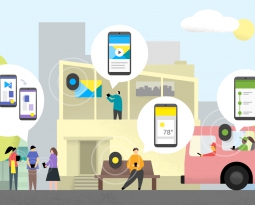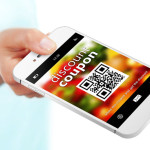With the wider availability of healthcare as a result of recent legislation and an increased demand for patient-centered care, beacons stand as a viable solution to address shortcomings and information gaps in healthcare. Placed throughout hospitals, clinics and even homes, beacons can help patients feel connected throughout a process that typically makes one feel isolated to waiting rooms and empty hallways.
Using beacons, healthcare providers and their patients can retrieve the information they need instantaneously while connecting to a larger network of information and service provision. In the future, we can also expect the Bluetooth Low Energy signals that empower beacons to find their way into an interconnected web of medical devices so that patient data and needs are never more than a click away for healthcare providers.
Wayfinding
The simplest application of beacons in a healthcare setting would be to use them for wayfinding. Beacon devices could be placed throughout hospitals or larger clinics so that patients can be directed through beacon platform âbread crumbsâ that offer turn-by-turn directions for navigation.
In an industry that often depends on volunteers or entry-level staff to rattle off instructions like âgo on the elevator, turn left, follow the hall, turn right, enter the other elevator,â etc., wayfinding can be an important method to not only improve the patient experience but to also alleviate anxiety during visits when stress is already high.
Check-Ins and Admitting
Hospitality and travel industries are currently using beacons to greet customers digitally and send them instructions on the status of service such as queue times while also fetching the new arrivalâs information for front-house staff to expedite check-ins.
In the aforementioned industries, these features are merely pleasant convenience. In the healthcare industry, these types of features could save lives. Patients who arrive in the emergency room can have instant access to doctor wait times, and they can begin filling out necessary information on their personal devices the second they walk in the door. When this information is retrieved by triage workers, they can use it to assign care based on urgency as well as patient records that can be retrieved in the same instant.
The admitting process for clinic visits can be expedited, as well. Traditionally, patients are told by word-of-mouth, printed instruction sheets or posted signs what sort of information and documents they need to have ready before they can be admitted for their appointment.
Some healthcare brands like the Mayo Clinic are handing visitors iPads to help decrease the friction during this process while also ensuring that prompts are crystal-clear. Beacon platforms can offer an even more convenient, cost-cutting shortcut since the visitor is able to use their own personal device that they are familiar with to complete this process. Patients may also feel more empowered since they do not have to wait for assistance to begin preparing to be admitted.
Beacons in Tomorrowâs Healthcare
As the use of beacons expands past their current use, we can expect them to shake up industries like healthcare in earth-shattering ways. Beacons in every patient room can serve up virtual âclipboardsâ with patient information the second doctorâs enter. Looking even farther forward, BLE technology can connect devices like blood pressure monitors to broadcast data signals intermittently to nurseâs stations. Soon, every facet of healthcare from patient beds to EKGs to IVs could communicate in ways that keep doctorsâ thumbs literally on the pulse of every one of their patients, even when they are several floors away.
Digital Social Retail wants to help make that future a reality with our easy-to-use beacon platform system. Send dynamic messages to patient devices, connect beacons to data networks and begin your path down the future of healthcare all within our digital convergence platform. Visit our product overview page to learn more.










